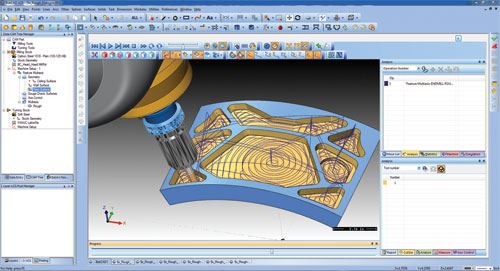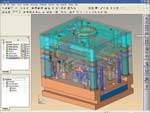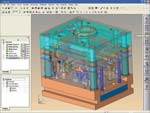The Benefits of Modular CAD/CAM
Modular CAD/CAM software allows different software functionalities to be available independently of one another.
Many times CNC manufacturing businesses seek out CNC programming software only to find that they end up paying for CAM technology that they really don't need, along with maintenance that they will never use.
A simple solution to this is the development of modular CAD/CAM software, which allows different software functionalities to be available independently of one another. This means that shops that need 2.5-axis machining capabilities can acquire it without having to pay for software functionality that they will not use.
Giving CNC businesses the ability to add on to a CAD/CAM product as needed for upgrade costs in functionality is a better way to help shops grow as they learn CAM technology and employ it into their operation. For example, a shop that has a CNC router may start off with a complete 2-axis CAD/CAM system that allows them to create 2.5 axis toolpath and G-code programs for a router. The same company may then acquire a 3-axis CNC machine down the road, and would be able to add on to the software and upgrade to the next level, at very low cost, in order to take advantage of machining technology for 3-axis, and so on.
For small shops, this makes more sense than the alternative, which is to have to pay more money for more technology, which some shops simply wouldn't use until the right job came along.
The bottom line is that modular type CAD/CAM products give smaller shops with tighter budgets the opportunity to grow by starting off with simpler software packages that cost less. They can upgrade software functionality as they need it, which is a great benefit for shops that are getting into making molds.
Shops can save money by upgrading CAD/CAM software to add higher level toopaths and programming functionality, such as a mulitaxis package, which can include seven surface-based toolpaths that increases the user’s ability to control where and how material is removed.
Since it doesn’t cost as much for an upgrade as it would tobuy an entirely new package, this is recommended as the better route for shops to take. Starting with a simple 2-axis product and gaining the skill set to be utilized with the higher end features that a multiaxis package offers when warranted.
Multiaxis is just that, not only does it offer more toolpath options, it also supports 4- and 5-axis output. As your parts get more complicated to machine, it usually means you are adding a 4th or 5th axis to eliminate setup time or just to have the ability to cut the parts according to the design.
Suppliers that offer 4-and 5-axis upgrades are able to support table-table, head-table and head-head machine configurations, giving CNC businesses a more affordable path to acquire this type of technology.
Other modules offer CNC machining capabilities such as lathe, part nesting and sheet optimizing as well as artistic CAD/CAM, which allows the user to take a picture and turn it into a relief model or profile geometry that can then be machined.
The point is that these modules can be purchased separately, so businesses can introduce these functions into their shops as the need arises. Shops can save money and add technology as they grow.
Related Content
The In's and Out's of Ballbar Calibration
This machine tool diagnostic device allows the detection of errors noticeable only while machine tools are in motion.
Read MoreLeading Mold Manufacturers Share Best Practices for Improving Efficiency
Precise Tooling Solutions, X-Cell Tool and Mold, M&M Tool and Mold, Ameritech Die & Mold, and Cavalier Tool & Manufacturing, sit down for a fast-paced Q&A focused on strategies for improving efficiencies across their operations.
Read MoreCAM Automation Increases Mold Production, Quality
Mold builder switches CAM software package after 20 years to take advantage of innovative programming strategies that reduce mold machining programming and processing times.
Read MoreProducts and Services for Multiple Moldmaking Needs
New year, new technology roundup! Featured here is a collection of product offerings, from profile milling cutters to industry-specific CAD/CAM software to innovative hot work tool steels.
Read MoreRead Next
Conquering CAD/CAM Challenges
Leading software manufacturers and suppliers reveal how moldmakers can maximize efficiencies using the latest CAD/CAM equipment so they can program and cut complex molds in less time than ever before.
Read MoreReasons to Use Fiber Lasers for Mold Cleaning
Fiber lasers offer a simplicity, speed, control and portability, minimizing mold cleaning risks.
Read MoreHow to Use Strategic Planning Tools, Data to Manage the Human Side of Business
Q&A with Marion Wells, MMT EAB member and founder of Human Asset Management.
Read More










_300x250 4.png;maxWidth=300;quality=90)
.jpg;maxWidth=300;quality=90)















.jpg;maxWidth=970;quality=90)